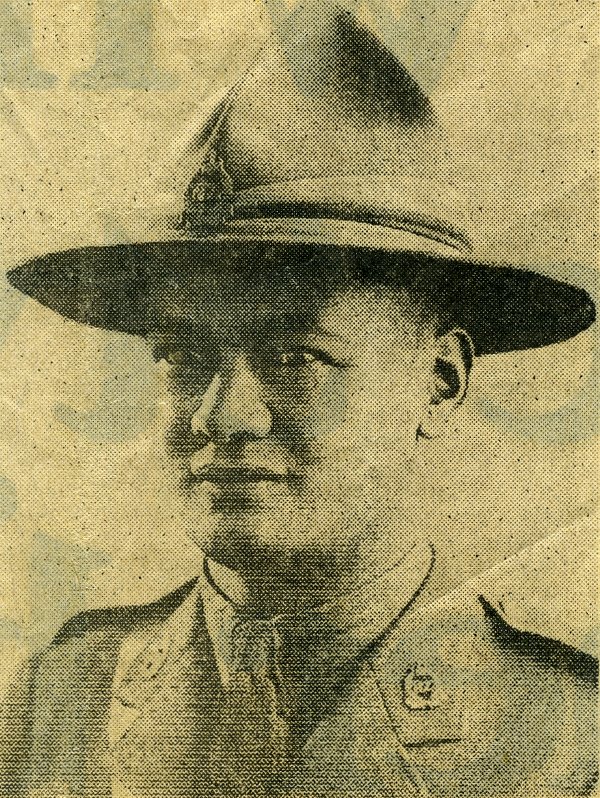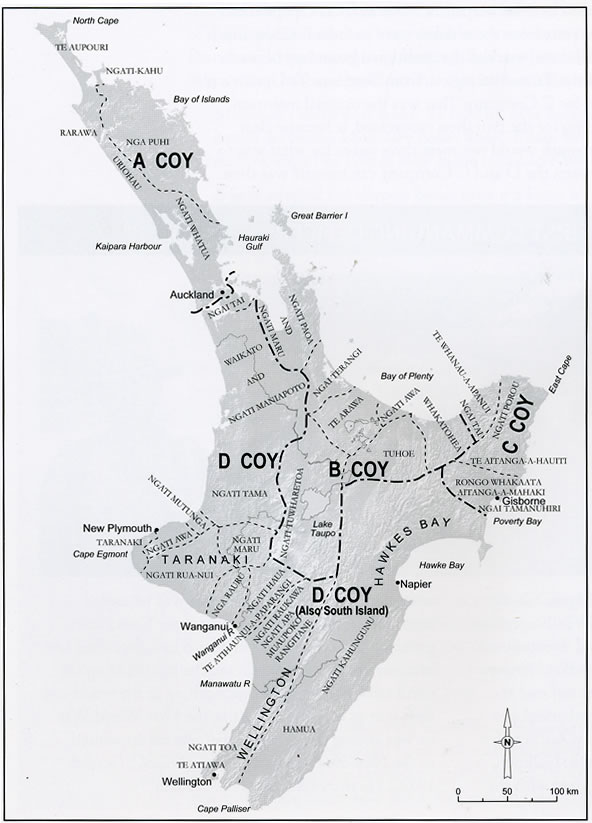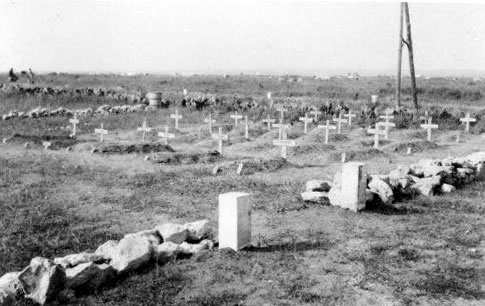WIREMU, Hemi (#210)

#210
Lieutenant Hemi ‘Himi’ WIREMU MBE
Maori in Nga Puhi A Company

“Hemi (Himi) Wiremu was a Lieutenant in A Company. Hemi was educated at St Stephens and was later a member of staff teaching agriculture from 1931-1936. He then worked at the Forestry Department in Rotorua working for the St John Ambulance Brigade. He started the 2nd Company of the Boys’ Brigade at Ōhinemutu, and was a lay reader at St Faith’s Church.
He was caputred in Greece and spent four years as a prisoner of war in Germany.
In 1945 he was released, he went to London and spent a year at Bango University in North Wales doing a forestry course. He also met his english wife with whom he had three children (two sons and a daughter).
Hemi worked in farm management, and as a member of the voluntary civil police until 1963. He joined the staff of New Zealand House as Commissionaire.” (Source: https://28maoribattalion.org.nz Reference: Text from Te Ao Hou, No 60, 1967, p.24. Photo from newspaper article sent in by Jean Hooker, Pukekohe)
“Hemi Wiremu
The Head Receptionist at New Zealand House in London is Hemi Wiremu of Kaitaia who went to the other side of the world with the Maori Battalion and now, at fifty-four, is settled with his family in London.
Hemi was educated at St Stephens and was later on the staff there, teaching agriculture from 1931–1936. He then worked at the Forestry Department in Rotorua, working also for the St John Ambulance Brigade there. As well, he started the 2nd Company of the Boys’ Brigade at Ohinemutu, and was a lay reader at St Faith’s Church.
This busy life was interrupted by the Second World War: Hemi was a lieutenant in the Nga Puhi A Company. He was captured in Greece and spent four years as a prisoner-of-war in Germany. In 1945 he was released, came to London, met his English wife, and spent a year at Bangor University in North Wales doing a forestry course. He and his wife visited New Zealand in 1946, returned to London in 1947, and have remained there ever since. Hemi worked in farm management, and as a member of the voluntary civil police, until in 1963 he joined the staff of New Zealand House as Commissionaire.
Hemi and his wife have two sons and a daughter, all at school. The eldest son hopes to go to Oxford University next year.
Hemi is an active member of the Aotearoa Maori Club. He enjoys the chance of meeting New Zealanders in his job, and obviously often thinks of home.” —Barbara Ewing. Source: http://teaohou.natlib.govt.nz/journals/teaohou/issue/Mao60TeA/c12.html)
About the 28th (Māori) Battalion
The 28th (Māori) Battalion was part of the 2nd New Zealand Division, the fighting arm of the 2nd New Zealand Expeditionary Force (2NZEF) during the Second World War (1939-45). A frontline infantry unit made up entirely of volunteers, the Battalion usually contained 700-750 men, divided into five companies.
The NZ Division
The NZ Division was made up of 15,000-20,000 men, divided into three infantry brigades (the 4th, 5th and 6th Brigades), plus artillery, engineers, signals, medical and service units. Each brigade initially had three infantry battalions (numbered from 18th to 26th). The 28th (Māori) Battalion was a specially formed battalion that was at times attached to each of the Division’s three brigades. Each battalion was commanded by a lieutenant-colonel.
The Māori Battalion
Like the other infantry battalions, the Māori Battalion was divided into five companies: four rifle companies of about 125 men each and a headquarters (HQ) company of around 200 men. Each company was commanded by a major or captain. The Battalion’s four rifle companies (named A, B, C and D) were organised along tribal lines, while HQ Company drew its personnel from all over Māoridom.
Each rifle company was divided into three platoons led by a lieutenant. Each platoon was in turn made up of three sections of about 10 men led by a non-commissioned officer (NCO). HQ Company was made up of six specialist platoons: signals, anti-aircraft, mortars, Bren Gun Carriers, pioneers and transport.
Reinforcements
The main body of the Māori Battalion left New Zealand as part of 2NZEF’s 2nd Echelon in May 1940. To maintain its strength throughout the war, especially when heavy losses were suffered, groups of new recruits were regularly sent from New Zealand. 2NZEF’s 3rd Echelon sailed for the Middle East in August 1940, followed by the 4th Reinforcements in November and the 5th, 6th and 7th Reinforcements in 1941. The last Māori recruits to see action, part of 2NZEF’s 14th Reinforcements, arrived in Italy in April 1945 (the 15th Reinforcements did not reach Egypt until May 1945, after the war in Europe ended). Read more about the Māori Reinforcements.
Counting the cost
In total, almost 3600 men served overseas with the Māori Battalion between 1940 and 1945. Of these, 649 were killed in action or died on active service – more than 10% of the 6068 New Zealanders who lost their lives serving with 2NZEF in the Middle East and Europe. In addition, 1712 men were wounded and 237 were prisoners of war.
In the words of Lieutenant-General Bernard Freyberg, who commanded the 2nd NZ Division, ‘no infantry battalion had a more distinguished record, or saw more fighting, or, alas, had such heavy casualties as the Maori Battalion.’
Māori in other services
Many Māori also served with other units in the 2nd NZ Division, with the 3rd NZ Division in the Pacific, in New Zealand-based army units and in the Home Guard. Others served with the Air Force, Navy and Merchant Navy. Some Māori women served in the Army Nursing Service and the women’s army, air force and navy auxiliaries. Between 1939 and 1945 almost 16,000 Māori volunteered for war service, out of a total population of fewer than 100,000. (Source: https://28maoribattalion.org.nz/story-of-the-28th/about-the-28th)
https://business.facebook.com/MaoriBattalion/
https://wartimememoriesproject.com/ww2/view.php?uid=219830
https://www.wartimememoriesproject.com/ww2/pow/powcamp.php?pid=3097
https://www.nzonscreen.com/title/maori-battalion-march-to-victory-1990




